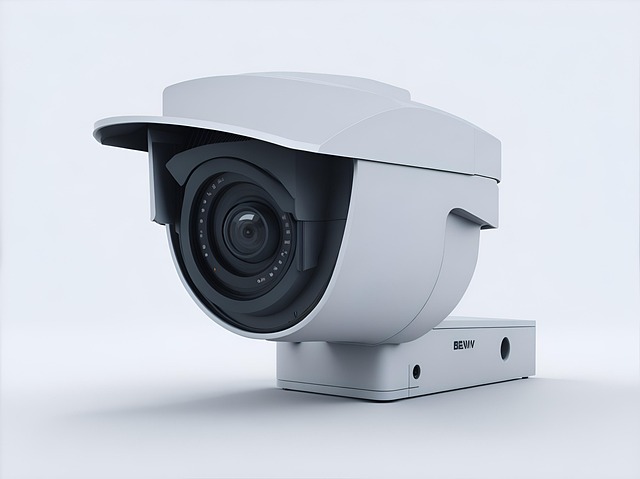For a professional CCTV installation, start by identifying key surveillance areas like entrances, valuable assets, and security risks. Strategically place cameras at optimal angles (e.g., eye level or slightly elevated) to ensure clear views without an intrusive appearance. Use high-resolution cameras (like 4K) for detailed identification and effective monitoring in various lighting conditions. Plan with experts, use quality components, and maintain regular checks on camera functionality and cable integrity. Conduct annual professional servicing to prolong the lifespan of your security system.
Uncover expert insights on achieving optimal camera placement and setup for your security needs. This comprehensive guide navigates the essentials of CCTV camera positioning, from understanding basic principles to selecting the ideal resolution and ensuring a seamless professional installation. Learn key factors influencing camera angles, maintenance tips for longevity, and best practices to elevate your surveillance system. Implement these strategies for a robust and efficient professional CCTV installation.
- Understanding the Basics of CCTV Camera Placement
- Factors to Consider for Optimal Camera Angles
- Choosing the Right Camera Resolution and Quality
- Best Practices for Setting Up a Professional CCTV System
- Maintenance and Upkeep Tips for Longevity of Your CCTV Installation
Understanding the Basics of CCTV Camera Placement

Understanding the basics of CCTV camera placement is crucial for any property owner or business looking to invest in a professional CCTV installation. The first step involves identifying key areas that require surveillance. This could include entrances and exits, high-value assets, and areas with potential security risks. Once these zones are determined, strategically placing cameras ensures optimal coverage without causing an intrusive presence.
Professionals recommend using multiple cameras positioned at different angles to create a comprehensive view. Fixed and bullet cameras offer stable footage, while PTZ (pan-tilt-zoom) models allow for dynamic scanning, making them ideal for large areas or incidents requiring immediate response. Proper placement also considers lighting and obstructions, ensuring clear images day or night.
Factors to Consider for Optimal Camera Angles

When setting up cameras for a professional CCTV installation, understanding and considering optimal camera angles is paramount. The primary goal is to capture clear, unobstructed views of the targeted areas while ensuring privacy and security. Factors like lighting conditions, potential obstacles, and the layout of the space play significant roles in determining the best angle for each camera. For instance, positioning cameras at a slight downward tilt helps prevent obscuring objects or people by overhead elements, like branches or air conditioning units.
Additionally, maintaining a 360-degree view without creating visual distortions requires strategic placement. Side angles should capture clear images along walls while avoiding the “fish-eye” effect, which can distort distances and details. Adjusting camera positions to capture scenes from eye level mimics human perception, enhancing the effectiveness of surveillance. These considerations ensure that the CCTV system not only provides comprehensive security but also offers accurate, detailed footage for analysis.
Choosing the Right Camera Resolution and Quality

When setting up a surveillance system, one of the vital considerations is selecting the appropriate camera resolution and quality for your specific needs. Higher resolution offers sharper images, enabling clear identification of individuals or objects in the frame. This is especially crucial for professional CCTV installation where detail is critical for effective monitoring and evidence collection. Opting for high-quality cameras ensures robust performance under various lighting conditions and weather, enhancing their longevity and reliability.
Resolution choices range from standard HD (720p) to 4K Ultra High Definition (3840×2160). For general surveillance, 1080p HD is a popular choice, striking a balance between quality and file storage size. However, for detailed observation or in environments with poor lighting, 4K cameras provide significantly enhanced visibility. Professional installers often recommend evaluating the area to be monitored, considering factors like distance, lighting, and potential obstacles to determine the optimal resolution for effective and efficient surveillance.
Best Practices for Setting Up a Professional CCTV System

When setting up a professional CCTV system, proper camera placement is paramount. Position cameras strategically to cover key areas of interest, ensuring complete visibility. Consider factors like lighting, angles, and potential blind spots. Mounting them at eye level or slightly elevated offers a clear view, while aiming them downwards discourages loitering. Distribute cameras evenly across the area for comprehensive surveillance.
For optimal results, plan your system with an expert to ensure seamless integration. Use high-quality cables and connectors for reliable transmission. Choose cameras with superior image quality, night vision capabilities, and weatherproof designs for durability. Regular maintenance, including testing and cleaning, ensures the CCTV system functions efficiently, providing peace of mind and robust security.
Maintenance and Upkeep Tips for Longevity of Your CCTV Installation

To ensure your professional CCTV installation remains effective and efficient over time, regular maintenance is key. Start by conducting routine checks on all cameras, testing their functionality, clarity, and field of view. Clean the lenses using appropriate cleaning solutions to prevent smudges and debris from compromising image quality. Additionally, inspect cables for any signs of damage or fraying; repair or replace as necessary.
Regular maintenance also involves keeping your system updated with the latest firmware and software patches. This not only enhances performance but also adds security features, ensuring your CCTV installation remains a robust deterrent against potential threats. Lastly, consider scheduling professional servicing at least once a year to conduct in-depth inspections and ensure all components are functioning optimally, prolonging the lifespan of your investment in a professional CCTV installation.
A well-planned and executed camera placement strategy is key to achieving a robust, effective professional CCTV installation. By grasping the fundamentals of camera positioning, selecting the right resolution for your needs, adhering to best practices during setup, and prioritizing regular maintenance, you can ensure optimal security and surveillance. These insights empower property owners and managers to create a comprehensive monitoring system that discourages crime and instills peace of mind.
